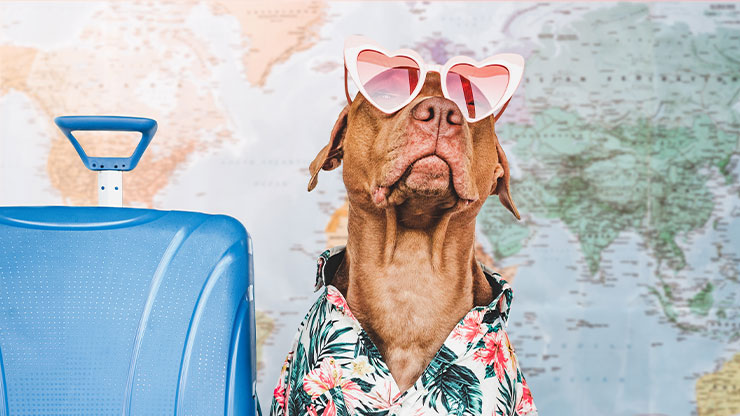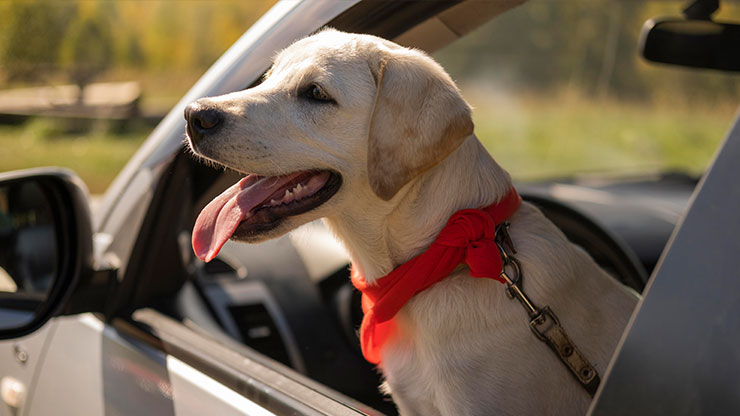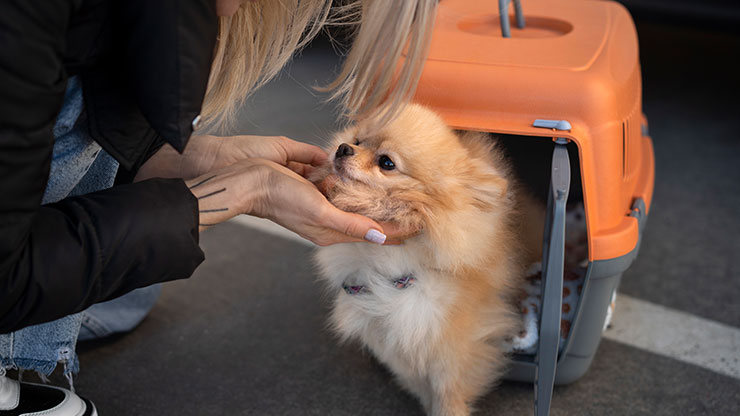
Considering Traveling with Your Dog? Understand Pet Travel Regulations Before You Go!
Dogs are part of the family, and many people want to be able to bring their furry friends with them when jetting off for trips and adventures, both in the US and beyond. However, before setting off on a voyage with a dog, it’s important to know the many rules and regulations around pet travel.
Navigating Pet Travel Regulations in the USA
First, let’s look at the regulations involved when both entering and leaving the US:
- Requirements for Dogs Leaving the United States: Before leaving the US, it’s recommended to have dogs checked over by a vet and issued a health certificate. Depending on where you’re headed, this certificate and vaccination certificates may be needed. Be sure to verify the precise requirements of your destination.
- Requirements for Dogs Arriving in the United States: If you’re bringing a dog to the US, they'll need to have a rabies vaccination and microchip record, and you'll need to make a reservation for them at a CDC-approved facility. Upon arrival, the dog will be examined, re-vaccinated, or quarantined, if necessary.
- Travel Kennels: All dogs must be kept in appropriate USDA and IATA-approved travel kennels. The USDA and IATA have precise guidelines for kennel size and construction. They must be made from solid wood, metal, or plastic, with enough room for the dog to stand up, turn around, and lie down. They should also have leak-proof floors and two dishes for food and water.
- Health Certificates: Many countries, including the US, demand to see health and vaccination certificates for all arriving dogs. Different countries will have different rules, so it’s vital to check well in advance and make the necessary arrangements with your dog’s vet before leaving.
- Traveling internationally with CVI: CVI stands for certificate of veterinary inspection. The authorities at your destination will likely need to see this certificate before allowing your dog to enter the country, so make sure to obtain one in the relevant timeframe and keep it with you when traveling.

Air Travel with Dogs: Airlines and Safety Protocols
In the past, flying with dogs wasn’t all that popular or accessible. But nowadays, many airlines have opened their doors to canine companions and softened their pet travel policies, making it easier for dogs and owners to fly together. However, there are still some rules and regulations to be aware of:
- In-Cabin Pet Policy: Every airline has rules regarding whether or not they allow dogs in the cabin. If dogs are allowed, the policy will usually state that they must be kept in carriers throughout the flight, and usually only small dogs (up to 20lbs) can be brought on board.
- Checked Baggage Pet Policy: Again, if you want to register your dog as checked baggage, airlines will each have their own rules and policies. In general, they only allowed checked baggage dogs at least eight weeks old, with a valid, recent health certificate, and in an appropriate carrier for their safety.
- Cargo Pet Policy: Bigger dogs tend to only be allowed in the cargo hold, and some airlines have policies that all dogs need to go into cargo rather than the cabin. Typically, these dogs will need a CVI, a crate that meets USDA and IATA standards, and enough space to move around comfortably.
Other Important Tips:
There are considerations in addition to the few that are listed that warrant mentioning.
- It's not safe for all breeds to travel cargo at certain times of the year due to temperature extremes. This is something that should be taken into consideration, and dog owners need to find out if this applies to their breeds.
- When dogs are shipped in cargo, they can be on a plane for long hours, and no one will be able to take them out to relieve themselves. The dog should not be fed prior to departure and should be provided ample opportunity to do their business to avoid discomfort or accidents during long flights.
- Not all airports have a place for dogs to relieve themselves. Dog owners flying with pets should call airports they will be traveling through ahead of time to see where they can take their dogs to relieve themselves.

Road Trips with Your Canine Companion
Another way to travel with a dog is to take a road trip. With road trips, you don’t have to worry about the complexities of airline pet travel policies, nor will you need to worry about health certificates unless you plan on driving over an international border with your dog. In general, it’s therefore a lot easier and simpler.
However, there are still legal considerations and rules to follow. Typically, in vehicles, all dogs should be properly secured or restrained with the aid of crates or harnesses for their own protection. This helps keep dogs safe while reducing the risk of them running around in the cabin and potentially causing distractions and accidents.
During these travels, one essential factor to remember is the adherence to DUI (Driving Under the Influence) laws. Following DUI regulations is vital, as a DUI charge can lead to severe consequences, including jail time, fines, and license suspension. The presence of a pet in the vehicle can amplify these penalties. Thus, a secure pet carrier or restraint is imperative to protect your dog's well-being. Unrestrained pets might be taken into custody, adding a layer of complexity to legal proceedings against the driver. To navigate such situations, seeking the assistance of a DUI lawyer can provide guidance, but the best course of action is to prevent any risk of DUI altogether and ensure your canine companion's consistent safety and security during your travels.
Hitting the road with your four-legged friend is a joyful experience that demands careful consideration of legal and safety aspects. While road trips offer simplicity, you must prioritize your dog's well-being by adhering to restraint guidelines and DUI regulations.
Health and Wellness Precautions for Traveling Dogs
Dogs can find it stressful and scary to travel. Many experience stressful feelings, which can manifest in various ways when they’re taken from their familiar surroundings or put into airplane cargo holds and restrictive travel crates. This is why owners are encouraged to consider their dogs’ health and wellness, taking preventative steps before any journey:
- Consult with a Vet: Make sure to speak with a vet before traveling to get expert advice about whether or not a dog is fit to travel.
- Dealing with Anxiety: If your dog is naturally anxious or stressed, you may want to consider certain medications or alternative travel modes, such as CBD oil, to reduce their stress.
- Health Risks: There are risks associated with flying with dogs, like the risk of them catching an illness from another dog on the plane. Ensure your dog is healthy and fully up-to-date with vaccinations before setting off.

Best Practices When Traveling With Your Dog
- Purchase an appropriate travel crate or carrier with enough room for your dog to feel comfortable and safe.
- Pack plenty of food and water.
- Remember to bring medications that your dog needs.
- Be ready for emergencies by knowing the location and phone number of veterinary clinics at your destination.
- Have your dog microchipped or fitted with an ID tag on their collar in case they get lost.
Preparing for Travel with Pets
Before setting off, it’s best to do plenty of preparation so that your dog is ready to travel. Plan your trip in advance, researching the relevant airline policies or destination regulations around pet travel. Consult with experts as needed if you’re unsure about anything, and think about how safe and appropriate your destination will be for your pet.
Conclusion
Overall, traveling with a pet can be a fun and exciting experience for the whole family, but there are factors to take into account. All pet owners should put in the necessary time, effort, and research to understand relevant rules and regulations. Then, take the best steps to protect their pets and ensure they reach their destination with minimal stress and risk.










